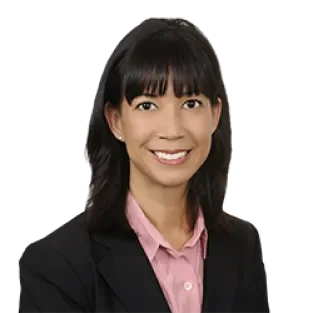ASAP
San Francisco Revises Paid Sick Leave Ordinance Rules
On May 7, 2018, the San Francisco Office of Labor Standards Enforcement (OLSE) published revised rules concerning the city’s generous Paid Sick Leave Ordinance (PSLO). The new rules come more than 10 years after the original groundbreaking rules were published in 2007. In the interim, a statewide paid sick leave law was created,1 effective July 2015,2 and the San Francisco ordinance was amended, effective January 2017.3 Aside from a handful of changes, the final substantive PSLO rules mirror the rules proposed in mid-March. Below we discuss the more notable new rules.
Covered Employers and Employees
The PSLO applies to employees who perform work in San Francisco. The 2007 rules established a 56-hours-working-in-San Francisco coverage requirement for employees working in the city on an occasional basis. However, the new rules remove “on an occasional basis” and appear to apply the 56-hour threshold generally.
The PSLO sets different accrual cap and carry-over standards for employers with 10 or more, or fewer than 10, employees (employees inside and outside San Francisco are counted). A new rule generally provides that a controlled group of corporations (per federal tax law) is considered a single employer and employees of unincorporated businesses are counted as working for one employer if the businesses are a controlled group. Another new rule concerns joint employment, examples of which include, but are not limited to, employers using a staffing agency, leading agency, professional employer organization, or other entity servicing the same or similar functions. OLSE will apply California law to determine whether an employee is jointly employed. If joint employment is found to exist, each employer must ensure compliance with the law; that an employee is employed by more than one employer will not impact an employer’s PSLO responsibilities.
Employee Notice, Verification and Documentation
The PSLO allows employers to require employees to give reasonable notice of an absence for which paid sick leave is or will be used, and to take reasonable measures to verify or document that an employee’s leave use is lawful.
A new rule provides that a verification or documentation measure is not reasonable if employees must disclose more information than necessary for an employer to determine an absence’s lawfulness.
Small but significant changes to employee notice and documentation rules will be welcomed by employers. The original PSLO rules permitted employers to require advance notice of pre-scheduled or foreseeable absences, to require notice as soon as practicable for unforeseeable absences, and to require documentation when leave is used to attend a medical appointment even if leave is used for three or fewer days.4 This remains true under the new rules, but such requirements will transition from reasonable “in principle” to “presumptively” reasonable. Accordingly, if an employer’s notice or documentation requirements are contested, it appears the burden will shift to OLSE or an employee to demonstrate the request is unreasonable.
In the rules’ introduction, OLSE observed that in developing rules it strove for practicality. Managing absences is challenging operationally and legally, and verification and documentation are key to successful leaves management. Note, however, that employers must ensure their policies and practices comply not only with PSLO requirements, but also those under state and/or federal law.
Rate of Pay
The PSLO generally tracks California’s paid sick and safe time (PSST) law for calculating the rate of pay when an employee uses leave, with different calculations for non-exempt and exempt employees. Like California’s PSST law, “regular rate of pay” is not defined in the ordinance. However, a new rule provides that the regular rate is calculated according to state law, with deference given to calculation methods used by California’s Division of Labor Standards Enforcement (DLSE), which enforces the state’s wage and hour laws. The rule also re-confirms that an employee’s exempt status is based on whether an employee is entitled to or exempt from overtime pay under the federal Fair Labor Standards Act (FLSA) and California law. This standard aligns with that set by OLSE in the original rules that have been used for over a decade, and conforms to how the term is generally understood. Note, however, that this deviates from how the DLSE has interpreted the term “exempt” for state law rate of pay purposes, i.e., the “exempt” calculation for paid sick leave can only be used for executive, administrative, and/or professional employees.
OLSE wades further into wage and hour territory with a separate rule providing that, if exempt employees are provided no paid leave other than paid sick leave and sick leave is taken, their salary must continue without deduction for the absence, but their leave balance can be reduced. This issue is currently addressed by FLSA regulations issued by the U.S. Department of Labor and in the DLSE’s enforcement manual. It remains to be seen whether OLSE will interpret its rule in the same manner as its state and federal counterparts.
Rehired Employees and When Leave Can be Used
The PSLO tracks California PSST law and provides that, if an employee separates from employment and is rehired within one year, previously accrued but unused leave must be reinstated and such leave can be used – and new leave accrued – upon rehiring. Additionally, both laws provide that employees are entitled to use accrued leave beginning on the 90th day of employment.
A new rule clarifies that, if an employee is rehired within one year of separation, the original period of employment is counted to determine whether the waiting period requirement has been satisfied. If the employee did not complete the waiting period during the original period of employment, additional work must be performed during the subsequent period before previously and newly accrued leave can be used. This level of clarification does not exist at the state level.
In the example the rules provide, OLSE interprets the PSLO’s waiting period requirement differently from how some have contemplated state law may be interpreted, i.e., an 89-day waiting period where OLSE uses a 90-day waiting period. In the example, OLSE says that an employee who worked 45 days in an initial period of employment would need to work an additional 45 days in the subsequent period of employment before leave could be used. Remember, however, when two laws apply, the more employee-friendly standard applies.
Unionized Workforces
All or any portion of the PSLO’s requirements may be expressly waived in clear and unambiguous terms in a collective bargaining agreement (CBA). The ability to waive requirements via a CBA is less burdensome under the PSLO than state law.
Many of the original PSLO rules discussed how the rules would function in the unionized workforce context, and the new rules do too. Importantly, the new rules clarify that many PSST-related practices in a CBA that have been deemed reasonable since the original rules will remain so, even if the CBA does not explicitly waive or reference the corresponding PSLO section, e.g., requirements to provide notice of the need to use leave, leave verification, and sick leave pay rates. Again, however, employers must be conscious of their ability to comply with all applicable PSST laws, not just the PSLO.
Enforcement
Absent from the original rules was information about how OLSE would investigate and resolve disputes. Three new rules solve that mystery. This article will not cover these procedures at length, but will briefly cover some items.
A new rule discusses the two ways OLSE may calculate remedies when an employer has a non-compliant policy, does not keep adequate records, or does not allow the agency access to records. Under the “CDC” method, OLSE will presume how much leave an employee would have used if the employer complied with the law – based on the national average of “frequency of work-loss days” for adults aged 18-55 – then subtract any paid leave the employee received to calculate back wages and penalties. Alternatively, OLSE may consider the number of days an employee missed, or would have missed, work for reasons that would allow the employee to use more leave than the CDC average.
When it comes to learning that OLSE believes an employer has not complied with the PSLO and responding to an OLSE Notice of Preliminary Determination (NOPD), employers may not feel that time is on their side. Under the new rules, the employer will have 15 calendar days to resolve the issue (including back pay, interest, and penalties) and comply with the law or contest the NOPD and request an OLSE review meeting. In addition, an employer will have only seven days to resolve or contest a retaliation charge.
New “Old” Rules
Although many original PSLO rules were carried over – wholly or with minor linguistic changes – some did not survive new San Francisco (rulemaking). Employers may categorize some losses as anything but, though others may be missed. For example, employers may be thankful the “conventioneer” rule – employees attending or presenting at a San Francisco convention or conference for 56 hours in a calendar year are covered – will go from the lanyard to the graveyard. However, they may experience FMLAise upon discovering a rule that provided PSLO standards did not supersede federal or state verification laws no longer exists. Another item falling by the regulatory wayside is the rule allowing employers to require employees to use more leave hours than requested if a replacement worker was paid for a longer period of time.
Next Steps
The revised rules do not constitute a sea change and, in fact, may not cover as many issues as employers hoped they would. However, it is possible the new rules are a first step in updating the PSLO’s standards. OLSE’s frequently asked questions (FAQ) have not been updated since September 2007. Some thought the agency might rebrand various FAQs as rules, but this did not occur. For over a decade, the 65-question FAQ has provided guidance on numerous issues like calculating business size, CBA waivers, when and where leave can or cannot be used, examples of leave abuse, and payment calculations, to name a few. Which FAQs represent OLSE’s current interpretation of the law, which will go out with the tide, and when we will know which is which, is unclear, so interested employers should monitor OLSE’s PSLO webpage.5



